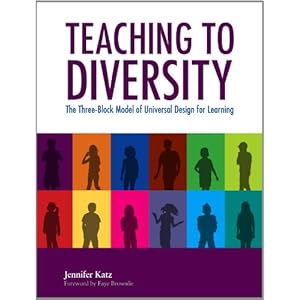
Teaching to Diversity Cover. (Accessed 2014). Uploaded to Amazon; Portage& Main Press.
Available online at: http://www.amazon.ca/Teaching-Diversity-Three-Block-Universal-Learning/dp/1553793536
- The physical space of your classroom affects your students as much
as what happens within your classroom
- The direction in which the desks face demonstrate who is in power and
what kind of interactions can take place between individuals
- Interest Areas
- Decide what activities will happen in your classroom and make sure
you have space to accommodate them
- Ex. science labs, student meetings, technology stations, etc
- Personal Territories
- Take into account what belongs to who (more important in single
grade classrooms, not so much when students change rooms for
every class)
Pedagogy and Classroom Management
- Teachers manage their students and then complain that they act out
once they leave the room, it should not be a top-down approach
* Case Study: Derrick (paper balls)
- Dealing with Challenging Behaviour
- Bring down situations and solve conflicts together
- Too many rules overwhelm kids and are unnecessary
Starting the Year
- Don't jump right into curriculum; establish expectations and model
behaviour by:
- Working through the RD program
- Introduce partner and group work
- Introduce centres
- Then begin curriculum
- Introducing Partnering & Group Work
- Discuss what does partner/group work look like? sound like?
- Role play partner work
- Discuss active listening
- Practice sharing ideas/"reporting the group's findings/thoughts"
and discuss the importance of everyone always needing to be
prepared to be the reporter
- Have a visual reminder in your room and use prompts to ensure
the students invite everyone to participate in groups and work to
find everyone's strengths
- Introducing Work Centres
- Use centres that address the different types of multiple
intelligences
- If you have 9 centres, use approx. 15 classes
- Ensure all students are participating positively
- Barriers That Students Feel
- Grades: they are worried that the performance of others in a
group will affect their assessment
- Pace: they are worried that certain students may affect their
ability to complete tasks on time
- E.As: any other adults in the room should interact positively
with any student in the room
Teachers in the U.D.L Classroom
- Circulate during centres and complete formative assessment so you
recognize which ones need enrichment, support, or oral options
* Case Study: Cory (suck at verbal-linguistic)
- Co-Teaching Scenarios
1 ) One Teaching / One Drifting
- One teacher delivers curriculum, one circulates around
- Advantages: timely help, on-task students, saves time
- Disadvantages: teacher control, one seen as an aide
2 ) Parallel Teaching
- Plan jointly but split into small groups to teach
- Advantages: small groups, separate students, better planning
- Disadvantages: learning equally, pacing, noise level
3 ) Alternative Teaching
- One manages the class, one pulls a small group out
- Advantages: help meet specific needs of students
- Disadvantages: labelling groups as "smart" or "dumb"
4 ) Station Teaching
- Teaching responsibilities are divided up and teachers hold
certain centres
- Advantages: easier to differentiate, small groups, cover more
material
- Disadvantages: lots of pre-planning, pacing, noise levels
5 ) Team Teaching
- Both plan and share instructional time, teachers converse &
both manage the room
- Advantages: active roles, equals, risk-taking
- Disadvantages: a lot of pre-planning, needs defined roles
- Working with EAs
- It is their job to facilitate engagement
Assessment For, Of, and As Learning with Diverse Learners
- Assessment: informal or formal, guides teaching and learning
- Evaluation: snapshot of where a student is in comparison to a
standard
- Reporting: communication of progress
- Students do not have to do pencil-paper tasks in order to fully
prepare for a pencil-paper exam
- Methods of Assessment
1 ) Observation
2 ) Conferencing
3 ) Portfolio Assessment
_____________________________________________
I WANT TO KNOW:
How often do you use formal centres in your classroom? and what Grade level/subject?
I used centres regularly in math and quite often in science but it was less formal.
Please leave your thoughts below :)

No comments:
Post a Comment
Thank you for commenting!